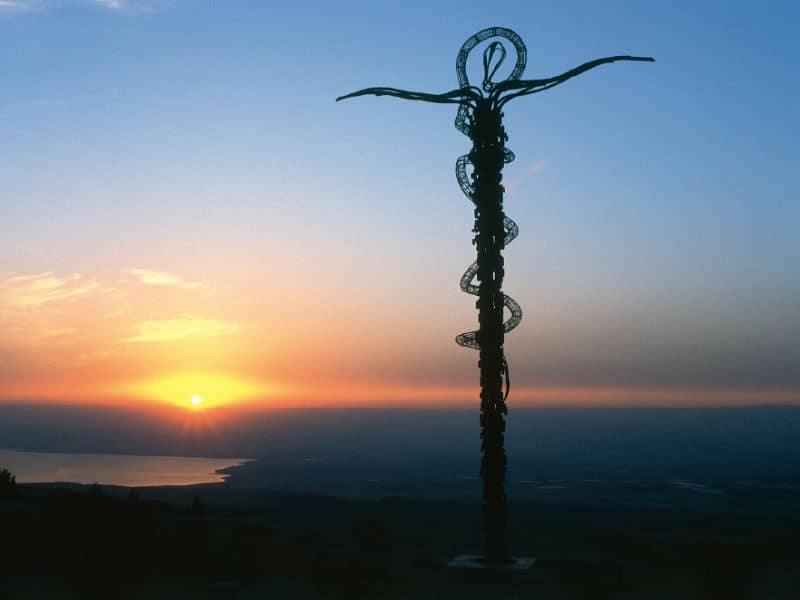A few years back, I joined India's wanderers for a few months. My father had been killed, my mother had been recovering from a huge heart attack, and my St. Louis home felt as cold and strange and lonely as Venus. Done correctly, travel is a series of tiny traumas, which appealed to me after the major traumas I'd undergone. The traveler, practically by definition, craves normalcy cobbled from abnormality. Wandering in unfamiliar places sets a pattern of a series of enlivening but re-orienting shocks to the system.
To me, mourning the oddness of a world without my father, striking out for North India felt the most comforting thing to do. We'd wandered around North India as a family when I was a kid, and our scrapbooks were filled with pictures of us: him with his long '70s sideburns and sandals, me squinting into the bright light and bustle of some Indian train station, rickshaw, taxi. Home was the road. I went to India because I wanted to be in a country of itinerants, a place full of people who have renounced the world in order to wander it. I wanted to be alone with my grief, not have it swirled over with everyone else's condolonces, pain, and sympathy. I wanted the salve of real loneliness.
And so I went to Ajmer, a city in North Rajasthan famous for the shrine of the great 12th century Sufi saint Sheikh Muinuddin Chishti. Sufis, or Muslim mystics, were great subcontinental wanderers, setting up dargahs, or shrines, and sending out their disciples on searches of their own. Khwaja Muinuddin Chishti, founder of the Sufi order that bears his name, had been born in Eastern Persia around 1138 C.E. Both his mother and father died when he was 16. After their deaths, he disposed of his world belongings, gave his money to the poor, and set out for Samarkand and Bokhara, then the great centers of religious learning. For the next three decades, he wandered in South Asia and what's now called the Middle East, searching for religious enlightenment and spreading the Chishti Order of Sufis. He arrived in Ajmer at the age of 52, with 40 disciples in train. It might have been Ajmer's dramatic situation--lodged in an oasis under a shelf of rocky hills--that led him to stay. In any case, he stayed in the town teaching disciples--many of them Hindus who converted--until he died at the age of 97.
Modern Ajmer is still a major pilgrimage site, not so much for Western tourists as for Indian spiritual seekers. Muinuddin Chishti's was an inclusive Islam, one less based on doctrine than humanism, and it shows. The crowds at the marble green-and-white hazrat, or shrine, were not just Muslims, but Hindu as well. Some gathered to listen to the sheikh. Others merely joined the crush to touch the carved grating around the tomb. In a courtyard was a giant golden urn, used to distribute rice, cooked according to the same recipe that was given to the poor in the saint's day.
I milled about with the pilgrims, watching the crowd throng around the green and white shrine, hustling into the inner sanctum for the prayers, or, like me, simply finding a shady spot to people-watch or contemplate. But the cheerfulness of the shrine, with its strings of jasmine for sale, its sweaty Technicolor crush, and families picnicking near the tomb, didn't suggest other worlds so much as civilization humming along, untroubled by mortality, as messy, rich and strange as usual. I didn't feel the sensuality of solitude until I left the city that afternoon. Waiting on a train platform to catch the train to Jodhpur, I was accosted by one of a sect of itinerant Hindu sadhus, who wear human bones around their necks, and drink from human skulls. His hair was gray and matted, age and dirt were folded into his face, and a bone necklace dangled around his neck. I was the only foreigner in the crowd, and he made straight for me on unsteady feet. The throngs of families sipping mineral waters and marshaling luggage and kids parted for him. He approached and harangued and gibbered, plucking my shirtsleeve, shoving the begging bowl at me. He glared, and I glared back. The platform stared at the standoff between two outcasts. Finally, a lady with a shiny bun of black hair and a starched emerald sari left her husband and her luggage, and told the sadhu to leave me alone. And then, blissfully, painfully, I was.

